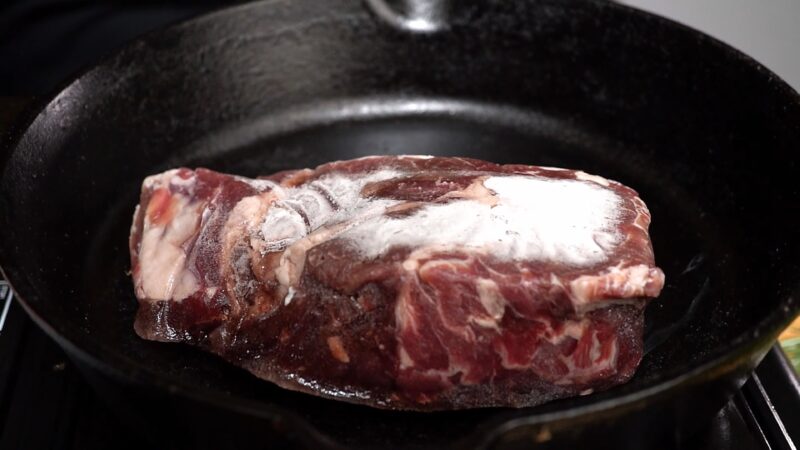There’s nothing worse than biting into a bad piece of meat. In this guide, I’ll share some down-to-earth tips I’ve learned from my own experiences on how to tell if frozen steak has gone bad.
We’ll rely on our senses and a little bit of common sense to ensure that your night ends on a high note, without any tummy troubles.
What do You Need to Know about Freezing Steak?

Freezing slows down the growth of microorganisms and the enzymatic reactions that cause food spoilage. When you freeze steak, you’re essentially putting these spoilage processes on pause. However, freezing doesn’t kill all bacteria; it merely inactivates them.
Once thawed, these bacteria can become active again, potentially leading to spoilage.
Limitations of Freezing:
While freezing can significantly extend the shelf life of the meat, it’s not a permanent solution. Over time, its quality can degrade due to factors like freezer burn, oxidation, and prolonged storage.
Understanding these limitations helps in setting realistic expectations and ensuring optimal steak quality.
Visible Signs of Spoilage
One of the most straightforward ways to determine if your meat is bad is by inspecting its appearance. Here are some visible signs to watch out for.
- Discoloration: A fresh steak should have a bright red or purplish hue when raw. If your frozen meat shows brown or gray patches, it might be a sign of oxidation or spoilage. While slight discoloration might not mean the meat is harmful, it can indicate a decline in quality.
- Ice Crystals and Freezer Burn: If you notice excessive ice crystals or dry, grayish-brown leathery spots on your meat, it’s a sign of freezer burn.
The Smell Test
Our sense of smell is a powerful tool in determining food freshness. A bad odor is a strong indicator that your meat might be past its prime.
Off-Putting Odors
When thawing and inspecting your steak, take a moment to smell it. Fresh meat should have a mild iron or bloody scent. If it emits a sour, rancid, or off-putting odor, it’s a clear sign that it’s spoiled and should be discarded.
Which Factors Affect the Odor?
It’s worth noting that vacuum-sealed steaks might have a slightly off odor when first opened due to the lack of oxygen. This is called “confinement odor” and should dissipate after a few minutes.
If the smell persists or is particularly strong, it’s safer to err on the side of caution and discard the meat.
Texture and Feel
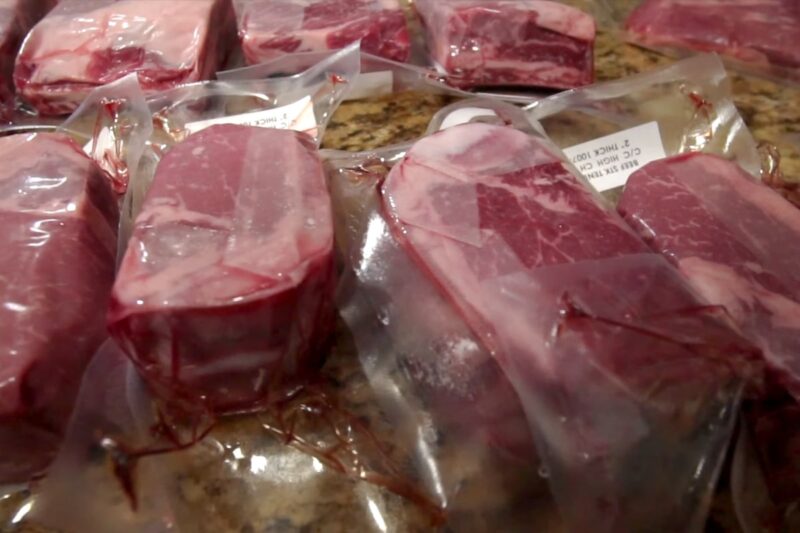
The tactile experience can also provide clues about the state of your meat. By touching it, you can gather information about its freshness.
Slimy or Sticky Surface
When thawing your steak, if you notice that it feels slimy or sticky to the touch, it’s a sign of bacterial activity. A slimy surface is a clear indication that the meat is spoiled and should not be consumed.
Hardened or Crystallized Edges
If the edges of the meat feel overly hard or have a crystallized texture, it might be a sign of prolonged freezing or freezer burn.
Check the Packaging
The condition of the steak’s packaging can offer insights into its quality and freshness. Here’s what to look out for.
Puffed or Bloated Packaging
If the packaging of your meat appears puffed up or bloated, it’s a sign of gas produced by bacteria. This is a clear indication of spoilage, and the meat should be discarded.
Damaged or Compromised Seals
Inspect the seals of the packaging. If they’re broken or compromised, air and bacteria might have entered, reducing the steak’s shelf life. While not a definitive sign of spoilage, it’s essential to be cautious and check for other spoilage signs.
Importance of Expiration Dates
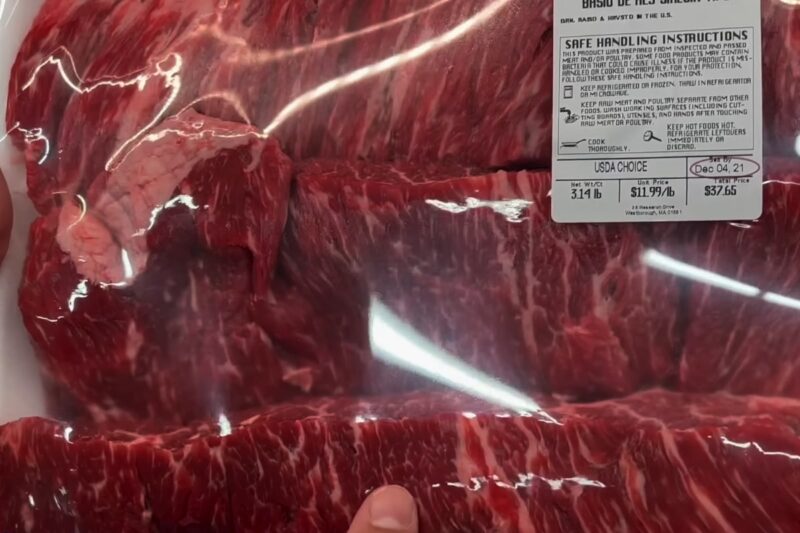
Expiration dates are more than just numbers on a package. They provide a guideline for the meat’s optimal freshness and safety.
“Best By” vs. “Use By” – what’s the difference?
Steak packaging often comes with dates labeled as “Best By” or “Use By”. The “Best By” date indicates when the meat is expected to remain at peak quality. Consuming it after this date might result in reduced flavor or texture, but it’s not necessarily unsafe.
The “Use By” date, however, is a safety recommendation. After this date, the steak’s safety can’t be guaranteed, and it’s best to discard it.
However…
While these dates are helpful, they’re based on optimal storage conditions. If a steak has been improperly stored or if the packaging has been compromised, spoilage can occur before the indicated date. Always use these dates as a guideline, but trust your senses too.
What are the Risks of Consuming Spoiled Steak?
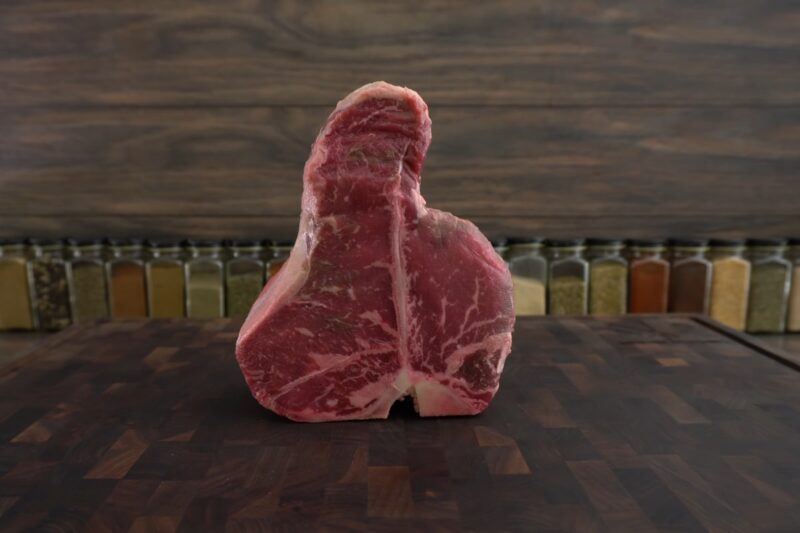
Consuming bad meat isn’t just about facing an unpleasant taste. There are health risks involved that everyone should be aware of.
Foodborne Illnesses
Spoiled steak can be a breeding ground for harmful bacteria like E. coli, Salmonella, and Listeria. Consuming contaminated meat can lead to food poisoning, manifesting in symptoms like nausea, vomiting, diarrhea, abdominal pain, and fever.
In severe cases, especially for vulnerable populations like the elderly, young children, or those with compromised immune systems, it can be life-threatening.
Nutritional Degradation
Apart from the risk of bacterial contamination, the nutritional value of the meat can degrade over time. Essential nutrients like proteins, vitamins, and minerals might break down, making the steak less beneficial from a nutritional standpoint.
How to Store a Steak Properly?
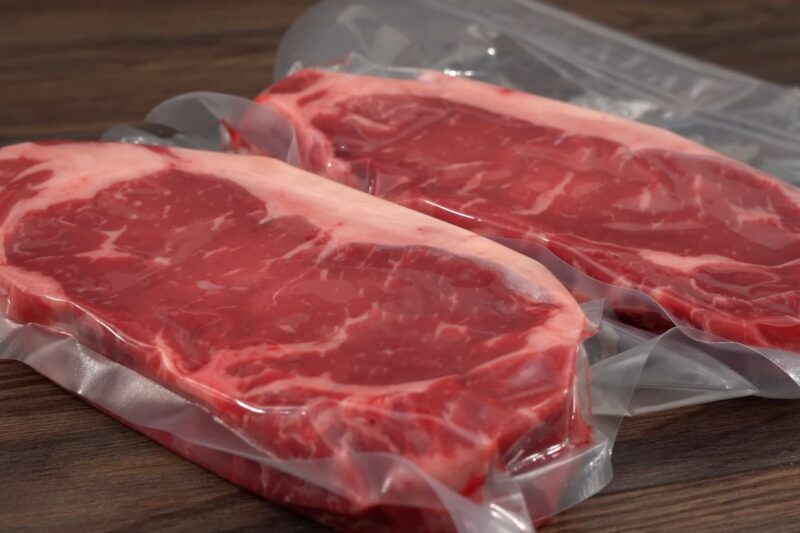
Proper storage is the key to prolonging the shelf life of the meat and preventing premature spoilage. Here are some tips to ensure your steak remains fresh for longer.
Vacuum Sealing
Vacuum sealing removes air from the packaging, reducing the risk of oxidation and bacterial growth. If you buy steak in bulk, consider investing in a vacuum sealer to store individual portions, ensuring they remain fresh for longer.
Regular Freezer Maintenance
Ensure your freezer maintains a consistent temperature of 0°F (-18°C) or lower. Regularly defrosting and cleaning your freezer can prevent ice build-up and ensure it operates efficiently. An inconsistent temperature can lead to thawing and refreezing, which can degrade the meat’s quality.
Thawing Steak Safely
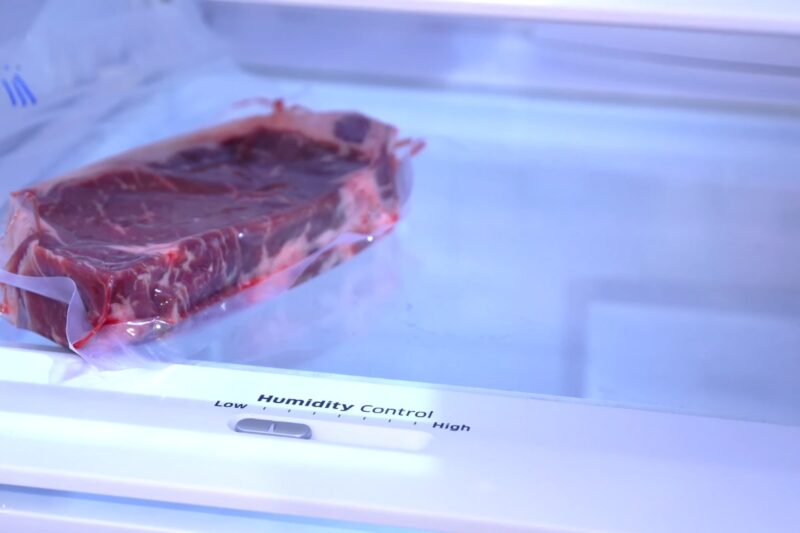
Thawing is a crucial step in preparing frozen meat. Doing it correctly can prevent bacterial growth and ensure the steak’s quality.
Refrigerator Thawing
The safest method to thaw steak is in the refrigerator. It ensures the meat remains at a safe temperature throughout the thawing process. Depending on the steak’s thickness, it can take anywhere from 12 to 24 hours to thaw completely.
Cold Water Thawing
If you’re short on time, you can submerge the sealed meat in cold water, changing the water every 30 minutes. It’s faster than refrigerator thawing but requires more attention. Once thawed, cook the steak immediately.
When in Doubt, Throw it Out!
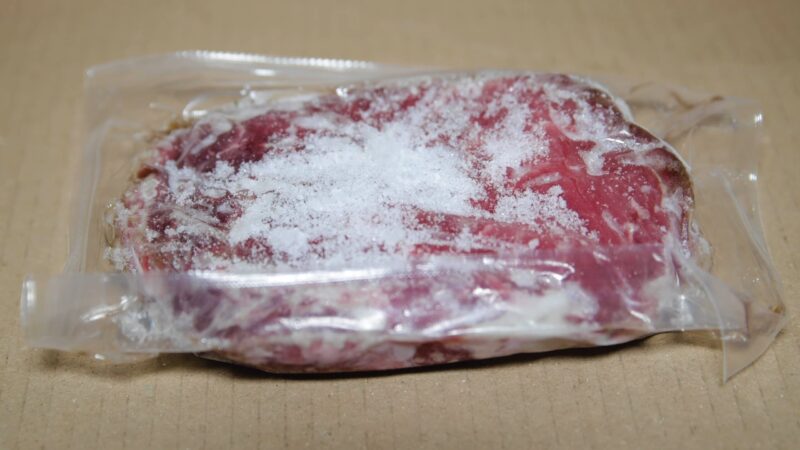
The adage “When in doubt, throw it out” is a golden rule when dealing with potentially spoiled food, and steak is no exception. While it might feel wasteful to discard the food you’re unsure about, consider the potential health risks and the discomfort of food poisoning.
The cost of replacing a steak is minimal compared to medical bills or lost days at work.
Trust Your Instincts!
Our senses have evolved over millennia to detect potential threats in our food. If something feels off about your meat, whether it’s the smell, appearance, or texture, it’s best to err on the side of caution and discard it.
FAQs:
How should one treat food poisoning from consuming bad steak?
Over-the-counter medication and plenty of fluids can help. If symptoms persist for more than 3 days or if you can’t keep liquids down, it’s best to contact a doctor.
Is it safe to eat steak that has been left out for a while?
Frozen steak starts to spoil if left out for 2 hours or longer at temperatures above 40°F (4°C). It’s best to discard such meat.
What temperature should it be cooked to?
The meat should reach an internal temperature of at least 145°F (63°C) to ensure harmful bacteria are killed.
How should it be frozen for long-term storage?
If storing for more than 2 months, wrap the original packaging in heavy-duty foil or freezer paper.
Is freezer burn harmful?
While freezer burn is safe to eat, it can affect the flavor and texture of the meat.
The Bottom Line
In conclusion, ensuring the quality and safety of frozen steak is a combination of proper storage, attentive inspection, and trusting your senses. By following this comprehensive guide, you can enjoy delicious and safe meat every time.
Remember, it’s always better to be safe than sorry. Enjoy your steak responsibly!
